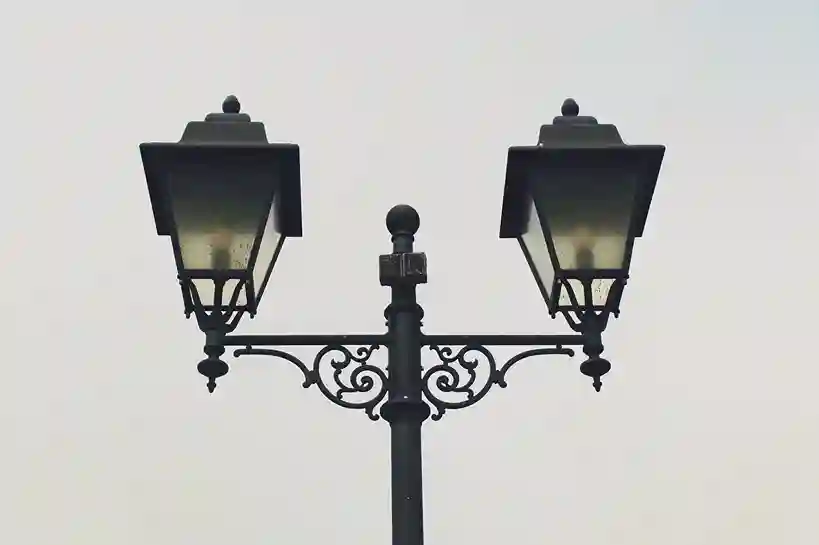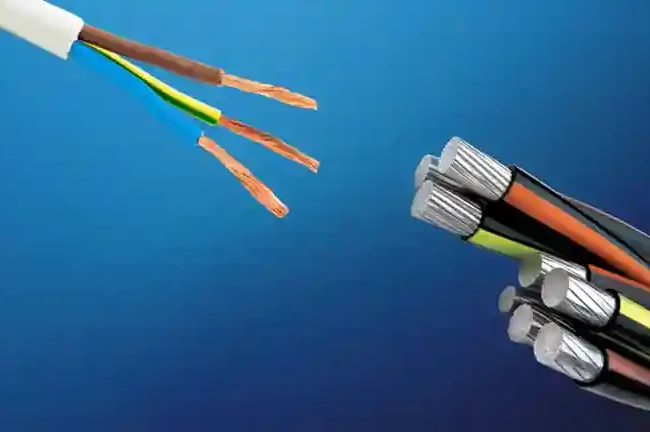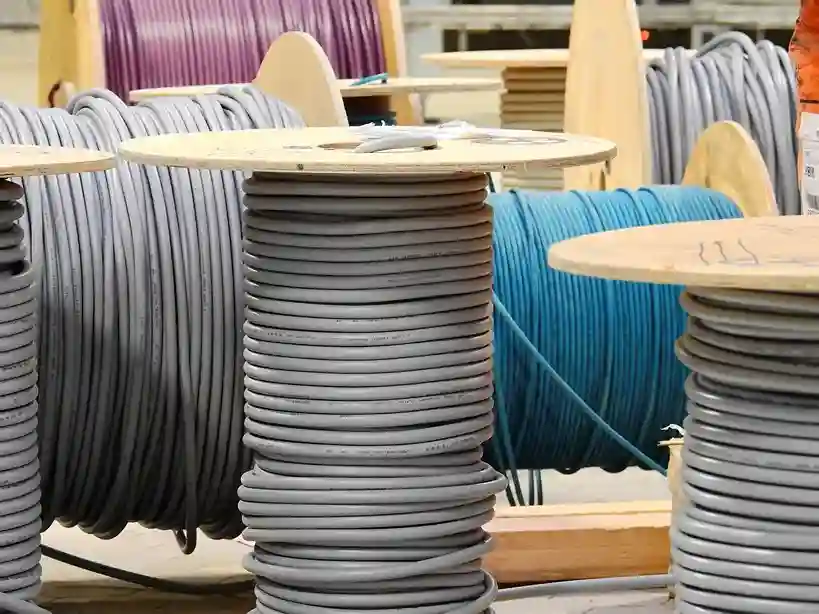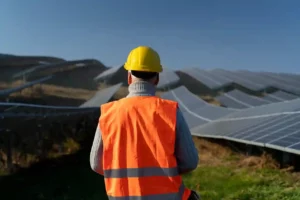
History of Electrical Cabling in Adelaide
We are proud to introduce our voltage drop and solar cable size calculator app, CableHero.
However, like any other advancement that man enjoys and experiences today, everything starts from somewhere.
Do you know how electric power cables came to be?
The Discovery of Electricity and Cabling
There’s a comprehensive list of individuals who greatly contributed to how we define and use electricity and power cables today.
Here’s ten.
William Gilbert
In the early 1600’s, William Gilbert, a physician, was the first to use the term “electricity” to mean “like amber in its attractive properties.”
Thomas Browne
It was his use of the term that made Sir Thomas Browne include it in his work, Pseudodoxia Epidemica of 1646 (commonly known as Browne’s Vulgar Errors).
Stephen Gray
According to Brittanica, British chemist Stephen Gray discovered that electricity can flow in 1729.
He was recorded in history to have transmitted electricity approximately 150 metres through a hemp thread supported by silk cords.
In another demonstration, sent electricity even farther through metal wire.
Gray concluded in his study that electricity flowed everywhere.
Benjamin Franklin
Among many things, American inventor and scientist Benjamin Franklin is widely known today for discovering electricity.
Back in 1752, Franklin conducted an experiment on a rainy day by using a kite and a key.
He had succeeded in studying the relationship between lightning and electricity.
Alessandro Volta
Then, in the year 1793, Count Alessandro Volta, an Italian physicist, discovered the idea of a circuit.
In his findings he proved that electricity passes from pole to pole and also that a circuit must be complete before current can flow.
George Simon Ohm
In 1826, George Simon Ohm, a German physicist, deduced that the current in a wire was related directly to the voltage of the source and the resistance of the wire.
This happened to be so controversial that Ohm decided to delay publishing these results.
Today, it is referred to as Ohm’s Law.
Joseph Henry
In 1830, Joseph Henry, an American scientist, conducted an experiment that disproved his own notions that there is no connection between electricity and magnetism.
In his experiment, he energised a wire, running near a second wire with a crude metre that showed electrical current. When he energised the first circuit, the metre moved.
In addition, he discovered that if he coiled up the wires, he could intensify the effect.
He would wrap the wire around a piece of iron.
Then, the intensity of the magnetism was enhanced further.
Since the wires should not touch each other, or the iron, to prevent a short-circuit, he took his wife’s silk dress and covered the wires with the material.
Thus, silk-covered wire became widely used in the wire business well into the 20th century.
Thomas Edison
On the 15th of March in 1892, Thomas Edison was granted a patent for his invention.
It was the electric conductor.
He applied for this patent back in 1887.
Edison described the objective of his invention was to effectively insulate the wire so that it will be waterproof and fireproof.
He also developed a direct current (DC) system and it became the standard of that time.
Nikola Tesla
Finally, we can’t mention Edison without his formerly hired engineer, Nikola Tesla.
Tesla is a Serbian-American inventor and electrical engineer who filed for patents that described a complete alternating-current (AC) power system.
It included his invention, the polyphase induction motor, commonly known as the AC motor, that uses a rotating magnetic field.
The AC motor challenged Edison’s DC system.
Converting to high voltages is more difficult when using the DC system.
Thus, it has limitations when it comes to distribution of power in rural and larger areas.
Charles Proteus Steinmetz
Charles Proteus Steinmetz was a German-born American mathematician and electrical engineer.
In 1895, his practical system of distributing alternating currents patent was granted.
He furthered Tesla’s ideas and successfully invented an alternating current motor.
Timeline of Electrical Cables
Here’s a list of electrical wire types and period of use.

Early Beginnings of Electricity in Adelaide
South Australia put electricity to public use in 1855.
At that time, Charles Todd arrived and pioneered electrical telegraphic communications.
Also, he introduced the notion of using electricity for street lighting.
The creation of Southern Australian Electric Company was in 1882.
Shareholders of the South Australian Gas Company prevented and opposed the early plans to use and advance electrical developments.
Thankfully, the South Australian Electric Light and Motive Power Company got registered by March 1895.
It began producing and distributing power from its Nile Street generator to Port Adelaide on the 1st of January 1899.
In the year 1900, Adelaide was provided with electricity from a short-term facility in Tam O’Shanter Place.
Then in November of 1901, the construction of a new coal-fired power station in Grenfell Street took place.
This power plant was able to meet the rising demand for electricity in North Adelaide by 1902.
On the 31st of August 1904, the Adelaide Electric Supply Company Ltd (AESCo) owned and bought the company.
AESCo widened its transmission into the suburbs, causing a rapid gain of consumers, which included electric tramways.
And in 1926, there was an even bigger demand for power.
This was beyond the production capacity of the Grenfell Street Power Station.
So, AESCo decided to build substations throughout Adelaide, expanding its transmission over the suburbs and rural areas.
Electricity Trust of South Australia (ETSA)
Throughout the 1930’s and early 1940’s, AESCo advocated the use of electricity.
The public’s dependency on this dominating industry greatly concerned the government.
By the time Tom Playford was premier in 1938, he worked on making changes to the electricity industry.
Playford had AESCo’s power stations use low grade Leigh Creek coal.
And with war-time regulations and popular support, Playford enforced a royal commission into AESCo, and then nationalised it.
By September of 1946, the Electricity Trust of South Australia (ETSA) came to be.
Electricity spread throughout South Australia after 25 years of its establishment.
It helped to expand and develop industry and agricultural production.
Even before its arrival in rural areas, private companies and local governments were able to install their own generators.
Port Augusta and Torrens Island constructed new power plants.
ETSA widened its reach with few external controls.
At the time when environmental issues were looming, ETSA’s engineers researched more about solar, wind and water-generated power.
Our solar cable size calculator was not yet available then, but with the production of affordable and more compact storage cells and other technological advancements, private individuals have tried and performed many small schemes using solar and wind power.
ETSA got revamped by the late 1980’s.
There was an interconnection of power supplies between New South Wales, Victoria and South Australia, and an increased interest of the government to cut costs and reduce public ownership.
The reconstruction continued on into the 1990’s.
Despite a successful reorganisation, ETSA privatisation was being planned.
By the year 2000, all its sections had changed back to private ownership.
Electrical Cabling in Adelaide Today
Much has improved on how we use electricity and power cabling in Adelaide.
With advancements come safer and more affordable power solutions for every homeowner and commercial building manager.
The establishment of AS/NZS 3000 Wiring Rules (Electrical Installations) and the AS/NZS 3008 Standard can help Australian engineers and energy consumers.
CableHero: Your Solar Cable Size Calculator
More environmentally friendly power generation and supply options are available for the conscientious.
So, whatever your choice may be, know that you can make safer and convenient cable sizing calculations with CableHero.
Try our solar cable size calculator app today.
Disclaimer: Although CableHero provides important and accurate tips and information through this website, CableHero does not make any representations or warranties as to the completeness, precision, trustworthiness, or timeliness of such information, and CableHero does not claim any duty to be held liable from the usage of the information.




